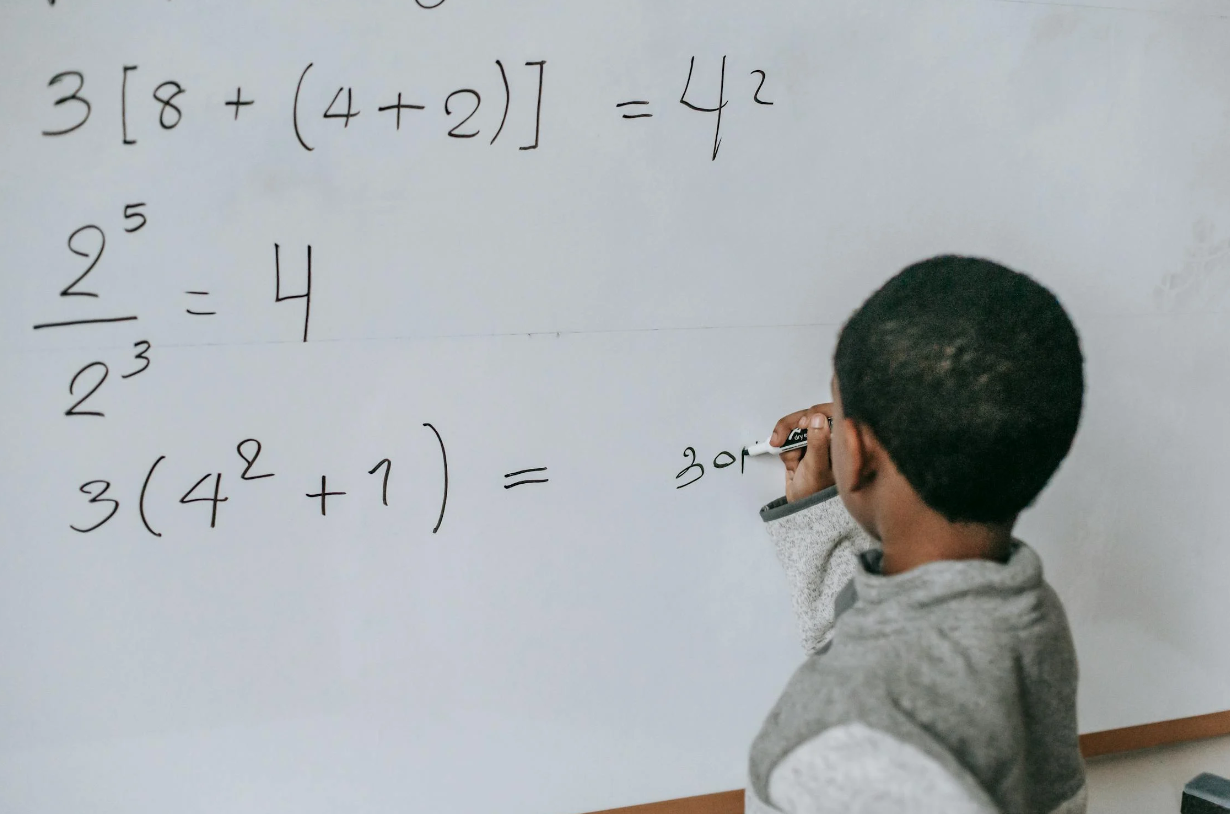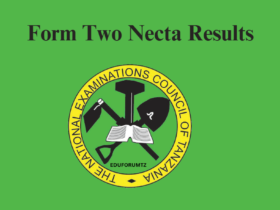NECTA Standard Seven Exams Mathematics Questions and Answers, Mastering Mathematics (Hisabati) for NECTA Standard Seven: Importance of Solving Past Papers and Exam Tips,
Mathematics, or Hisabati, is a subject that requires consistent practice and understanding of concepts to excel. For students in Standard Seven preparing for the Primary School Leaving Examination (PSLE), mastering Mathematics is critical for success. One of the most effective ways to achieve this is by solving NECTA past papers. Past exam papers give students a sense of the types of questions they can expect and help build confidence for the real exam.
Importance of Solving Past Papers
Solving past papers is a crucial aspect of exam preparation for several reasons:
- Familiarity with Exam Structure:
Past papers help students understand the structure of the exam, the types of questions that frequently appear, and the time allocation for each section. - Identify Knowledge Gaps:
By working through previous papers, students can identify the areas where they need to focus more attention. It highlights topics they may have overlooked during revision. - Boost Time Management:
Practicing under timed conditions helps students improve their ability to complete the exam within the allotted time. It reduces the chances of running out of time during the actual exam. - Improve Problem-Solving Skills:
Past papers often include challenging problems. By solving these, students enhance their critical thinking and problem-solving abilities, which are essential for excelling in Mathematics. - Build Confidence:
Familiarity with the types of questions and constant practice builds the student’s confidence. They feel more prepared and less anxious on the day of the exam.
Tips to Pass Mathematics Exams
To do well in Mathematics exams, students should follow these useful tips:
- Understand the Concepts:
Rote memorization won’t help in Mathematics. Make sure to understand the concepts and practice different types of problems related to each topic. - Practice Regularly:
Consistent practice is key to mastering any subject, especially Mathematics. Set aside time each day to practice different topics and questions. - Focus on Weak Areas:
Identify the topics or question types that are most challenging for you and work on those. Don’t just practice what you already know. - Review Mistakes:
Every mistake you make during practice is an opportunity to learn. Review the solutions carefully and ensure you understand where you went wrong. - Manage Time:
Time management during the exam is crucial. Practice solving past papers within the set time to ensure you can complete all the questions during the real exam. - Use Simple Methods:
Sometimes, simpler methods can solve problems more efficiently. Avoid over-complicating answers, and stick to straightforward solutions that get you the correct result.
50 Technical Mathematics Questions for NECTA Standard Seven Exams
1. Arithmetic (Addition, Subtraction, Multiplication, Division)
Q1: If you subtract 456 from 1,234, what is the result?
A: 1,234 – 456 = 778
Q2: Multiply 376 by 48.
A: 376 × 48 = 18,048
Q3: Divide 7,812 by 42.
A: 7,812 ÷ 42 = 186
Q4: What is the sum of 1,250 and 3,756?
A: 1,250 + 3,756 = 5,006
Q5: If a student divides 3,600 shillings equally among 9 friends, how much does each friend get?
A: 3,600 ÷ 9 = 400 shillings
2. Fractions and Decimals
Q6: Simplify the fraction 18/27.
A: 18/27 = 2/3 (after dividing both numerator and denominator by 9).
Q7: Convert 0.45 into a fraction.
A: 0.45 = 9/20
Q8: Add 2/5 and 3/4.
A: 2/5 + 3/4 = 23/20 = 1 3/20 (Convert to the same denominator and add).
Q9: Subtract 1/3 from 5/6.
A: 5/6 – 1/3 = 3/6 = 1/2 (Convert to the same denominator and subtract).
Q10: Multiply 2.5 by 1.2.
A: 2.5 × 1.2 = 3.0
3. Percentages
Q11: Find 35% of 840.
A: 35% of 840 = 0.35 × 840 = 294
Q12: A student scored 75 marks out of 100. What percentage did the student get?
A: (75/100) × 100 = 75%
Q13: A shirt that was originally priced at 20,000 shillings is now being sold for 15,000 shillings. What is the percentage discount?
A: (20,000 – 15,000) / 20,000 × 100 = 25%
Q14: Increase 480 by 12%.
A: 480 + (12/100) × 480 = 537.6
Q15: Decrease 900 by 15%.
A: 900 – (15/100) × 900 = 765
4. Geometry
Q16: Find the perimeter of a rectangle with a length of 15 cm and a width of 8 cm.
A: Perimeter = 2(L + W) = 2(15 + 8) = 46 cm
Q17: A triangle has a base of 12 cm and a height of 7 cm. What is its area?
A: Area = 1/2 × base × height = 1/2 × 12 × 7 = 42 cm²
Q18: Calculate the circumference of a circle with a radius of 14 cm (use π = 22/7).
A: Circumference = 2πr = 2 × (22/7) × 14 = 88 cm
Q19: What is the volume of a cube with a side length of 6 cm?
A: Volume = side³ = 6³ = 216 cm³
Q20: If the perimeter of a square is 64 cm, what is the length of one side?
A: Perimeter of square = 4 × side, so side = 64 ÷ 4 = 16 cm
Q21: Calculate the area of a rectangle with length 12 cm and width 8 cm.
A: 96 cm².
Q22: Find the perimeter of a square with a side length of 7 cm.
A: 28 cm.
Q23: What is the area of a triangle with a base of 10 cm and a height of 6 cm?
A: 30 cm².
Q24: The circumference of a circle is 44 cm. What is the diameter? (Use π=227\pi = \frac{22}{7}).
A: 14 cm.
Q25: A right-angled triangle has legs measuring 6 cm and 8 cm. Find the hypotenuse.
A: 10 cm.
Q26: Calculate the volume of a cube with a side length of 5 cm.
A: 125 cm³.
Q27: Find the area of a parallelogram with base 15 cm and height 8 cm.
A: 120 cm².
Q28: If the radius of a circle is 7 cm, calculate the area of the circle (π=227\pi = \frac{22}{7}).
A: 154 cm².
Q29: Find the surface area of a cuboid with dimensions 4 cm by 3 cm by 2 cm.
A: 52 cm².
Q30: The height of a cylinder is 10 cm, and the radius of the base is 7 cm. Find the volume of the cylinder (π=227\pi = \frac{22}{7}).
A: 1,540 cm³.
4. Algebra
Q31: Solve for xx: 3x+5=203x + 5 = 20.
A: x=5x = 5.
Q32: If 2y−3=92y – 3 = 9, find yy.
A: y=6y = 6.
Q33: Simplify: 5(x−2)+3×5(x – 2) + 3x.
A: 8x−108x – 10.
Q34: Solve for xx: 4x−7=2x+54x – 7 = 2x + 5.
A: x=6x = 6.
Q35: If 3a+2=173a + 2 = 17, find aa.
A: a=5a = 5.
Q36: What is the value of yy if y+8=3y−4y + 8 = 3y – 4?
A: y=6y = 6.
Q37: Solve for xx: 7x−2=5x+47x – 2 = 5x + 4.
A: x=3x = 3.
Q38: Simplify the expression: 2(3x−4)−5(x+1)2(3x – 4) – 5(x + 1).
A: x−13x – 13.
Q39: Find xx if 2x+3=92x + 3 = 9.
A: x=3x = 3.
Q40: Simplify: 4(x+5)−3(x−2)4(x + 5) – 3(x – 2).
A: x+26x + 26.
5. Word Problems
Q21: A farmer has 50 cows. If each cow eats 5 kilograms of grass per day, how much grass do all the cows eat in 7 days?
A: Total grass = 50 × 5 × 7 = 1,750 kilograms
Q22: John has 2,400 shillings. If he buys 3 notebooks for 200 shillings each, how much money will he have left?
A: Total cost = 3 × 200 = 600, so John will have 2,400 – 600 = 1,800 shillings left.
Q23: A shop sells 12 pens for 3,600 shillings. What is the price of one pen?
A: Price per pen = 3,600 ÷ 12 = 300 shillings
Q24: If it takes 8 workers 4 hours to build a wall, how many hours would it take 4 workers to build the same wall?
A: (8 workers × 4 hours) = 32 worker-hours. So, 4 workers will take 32 ÷ 4 = 8 hours.
Q25: A car travels 240 km in 4 hours. What is the car’s speed in km/h?
A: Speed = distance ÷ time = 240 ÷ 4 = 60 km/h
Q41: A car covers 120 km in 3 hours. What is its speed in km/h?
A: 40 km/h.
Q42: A man has 360 apples and sells 75% of them. How many apples are left?
A: 90 apples.
Q43: A water tank holds 500 liters. If 40 liters are used each day, how many days will the water last?
A: 12.5 days.
Q44: A worker earns 240,000 shillings per month. If 20% is deducted for taxes, how much is left?
A: 192,000 shillings.
Q45: If the price of 6 pencils is 1,200 shillings, what is the price of one pencil?
A: 200 shillings.
Q46: A bus travels 60 km in 90 minutes. What is its speed in km/h?
A: 40 km/h.
Q47: If 3 bags of rice weigh 150 kg, how much does 1 bag weigh?
A: 50 kg.
Q48: A bookshop sold 150 books in 5 days. What is the average number of books sold per day?
A: 30 books per day.
Q49: The cost of 8 mangoes is 2,400 shillings. What is the cost of 3 mangoes?
A: 900 shillings.
Q50: If a piece of cloth is 12 meters long and is cut into pieces of 1.5 meters each, how many pieces are there?
A: 8 pieces.
6. Ratios and Proportions
Q26: The ratio of boys to girls in a class is 3:4. If there are 24 girls, how many boys are there?
A: Let the number of boys be 3x and the number of girls be 4x. Since 4x = 24, x = 6. Therefore, the number of boys = 3 × 6 = 18 boys.
Q27: Divide 600 shillings in the ratio 3:5.
A: Total ratio = 3 + 5 = 8. So, the first part = (3/8) × 600 = 225 shillings, and the second part = (5/8) × 600 = 375 shillings.
Q28: A recipe requires 3 cups of sugar for every 5 cups of flour. How many cups of sugar are needed if you use 15 cups of flour?
A: 3/5 = x/15, solving for x, x = 9 cups of sugar.
Q29: The ratio of teachers to students in a school is 1:20. If there are 500 students, how many teachers are there?
A: Let the number of teachers be x. Therefore, x/500 = 1/20, solving for x = 25 teachers.
Q30: Simplify the ratio 45:60.
A: Simplified ratio = 45 ÷ 15 : 60 ÷ 15 = 3:4
7. Measurements
Q31: Convert 7.5 kilometers to meters.
A: 7.5 km = 7.5 × 1,000 = 7,500 meters
Q32: How many liters are there in 3,200 milliliters?
A: 3,200 milliliters = 3.2 liters
Q33: A rope is 1.8 meters long. Convert it into centimeters.
A: 1.8 meters = 1.8 × 100 = 180 centimeters
Q34: If 1 kg equals 1,000 grams, how many kilograms is 7,500 grams?
A: 7,500 grams = 7,500 ÷ 1,000 = 7.5 kilograms
Q35: Convert 24 hours into seconds.
A: 24 hours = 24 × 60 × 60 = 86,400 seconds
8. Miscellaneous Questions
Q36: Find the next number in the sequence: 3, 6, 12, 24, __?
A: The pattern is multiplying by 2. The next number is 24 × 2 = 48
Q37: Solve for x: 5x = 60.
A: x = 60 ÷ 5 = 12
Q38: What is the square root of 196?
A: √196 = 14
Q39: If x + 7 = 15, what is the value of x?
A: x = 15 – 7 = 8
Other calculation
. Distance, Speed, and Time
Q1: A cyclist covers 90 kilometers in 3 hours. What is the cyclist’s average speed in kilometers per hour?
A: Average speed = 90 km3 hours=30 km/h\frac{90 \, \text{km}}{3 \, \text{hours}} = 30 \, \text{km/h}.
2. Cost Calculation
Q2: A bag of sugar costs 5,000 shillings. How much will 6 bags of sugar cost?
A: Total cost = 6×5,000=30,000 shillings6 \times 5,000 = 30,000 \, \text{shillings}.
3. Work and Time
Q3: If 4 workers can complete a task in 8 days, how long will it take 2 workers to complete the same task, assuming they work at the same rate?
A: Time taken = 4 workers×8 days=32 worker-days4 \, \text{workers} \times 8 \, \text{days} = 32 \, \text{worker-days}.
For 2 workers: 322=16 days\frac{32}{2} = 16 \, \text{days}.
4. Area and Cost
Q4: A rectangular plot of land measures 20 meters by 15 meters. If the cost to fence the land is 200 shillings per meter, how much will it cost to fence the entire plot?
A: Perimeter = 2×(20+15)=70 meters2 \times (20 + 15) = 70 \, \text{meters}.
Cost = 70×200=14,000 shillings70 \times 200 = 14,000 \, \text{shillings}.
5. Savings
Q5: Jane saves 500 shillings each week. How much will she have saved in 6 months if each month has 4 weeks?
A: Total savings = 500×4×6=12,000 shillings500 \times 4 \times 6 = 12,000 \, \text{shillings}.
6. Profit Calculation
Q6: A shopkeeper buys an item for 4,500 shillings and sells it for 5,200 shillings. What is the profit?
A: Profit = 5,200−4,500=700 shillings5,200 – 4,500 = 700 \, \text{shillings}.
7. Travel Time
Q7: A bus leaves at 8:00 AM and travels for 5 hours and 30 minutes. What time does the bus arrive at its destination?
A: Arrival time = 8:00 AM+5 hours 30 minutes=1:30 PM8:00 \, \text{AM} + 5 \, \text{hours} \, 30 \, \text{minutes} = 1:30 \, \text{PM}.
8. Ratio
Q8: The ratio of boys to girls in a class is 3:4. If there are 24 girls, how many boys are in the class?
A: Let the number of boys be 3x3x and the number of girls be 4x4x.
If 4x=244x = 24, then x=6x = 6.
So, the number of boys is 3x=18 boys3x = 18 \, \text{boys}.
9. Percentage Increase
Q9: A farmer had 150 cows, and the number increased by 20%. How many cows does the farmer have now?
A: Increase = 20100×150=30\frac{20}{100} \times 150 = 30.
Total cows = 150+30=180 cows150 + 30 = 180 \, \text{cows}.
10. Simple Interest
Q10: If you invest 10,000 shillings at an interest rate of 5% per year, how much interest will you earn in 2 years?
A: Interest = 5100×10,000×2=1,000 shillings\frac{5}{100} \times 10,000 \times 2 = 1,000 \, \text{shillings}.
11. Division Problem
Q11: A group of 6 friends shares 540 shillings equally. How much does each friend get?
A: Each friend gets 5406=90 shillings\frac{540}{6} = 90 \, \text{shillings}.
12. Total Cost
Q12: If 4 notebooks cost 1,200 shillings, how much do 10 notebooks cost?
A: Total cost = 1,2004×10=3,000 shillings\frac{1,200}{4} \times 10 = 3,000 \, \text{shillings}.
13. Average
Q13: Find the average of the numbers 45, 55, 60, and 40.
A: Average = 45+55+60+404=50\frac{45 + 55 + 60 + 40}{4} = 50.
14. Fuel Consumption
Q14: A car uses 8 liters of fuel to travel 120 kilometers. How many liters of fuel will it use to travel 300 kilometers?
A: Fuel consumption = 8120=0.0667 liters/km\frac{8}{120} = 0.0667 \, \text{liters/km}.
For 300 km = 300×0.0667=20 liters300 \times 0.0667 = 20 \, \text{liters}.
15. Discount
Q15: A jacket costs 2,500 shillings but is sold at a 15% discount. What is the sale price?
A: Discount = 15100×2,500=375 shillings\frac{15}{100} \times 2,500 = 375 \, \text{shillings}.
Sale price = 2,500−375=2,125 shillings2,500 – 375 = 2,125 \, \text{shillings}.
16. Rate of Work
Q16: If 3 painters can paint a house in 12 days, how many days will it take 6 painters to paint the same house, assuming they work at the same rate?
A: 3×12=36 painter-days3 \times 12 = 36 \, \text{painter-days}.
For 6 painters: 366=6 days\frac{36}{6} = 6 \, \text{days}.
17. Perimeter
Q17: A rectangular garden has a length of 18 meters and a width of 12 meters. What is the perimeter of the garden?
A: Perimeter = 2×(18+12)=60 meters2 \times (18 + 12) = 60 \, \text{meters}.
18. Profit Percentage
Q18: A trader buys a bicycle for 120,000 shillings and sells it for 150,000 shillings. What is the percentage profit?
A: Profit = 150,000−120,000=30,000 shillings150,000 – 120,000 = 30,000 \, \text{shillings}.
Percentage profit = 30,000120,000×100=25%\frac{30,000}{120,000} \times 100 = 25\%.
19. Dividing an Amount
Q19: A sum of 1,200 shillings is to be shared between two friends in the ratio 2:3. How much does each friend get?
A: The total number of parts is 2+3=52 + 3 = 5.
The first friend gets 25×1,200=480 shillings\frac{2}{5} \times 1,200 = 480 \, \text{shillings}.
The second friend gets 35×1,200=720 shillings\frac{3}{5} \times 1,200 = 720 \, \text{shillings}.
20. Time and Distance
Q20: A car travels at 60 km/h. How long will it take to travel 300 kilometers?
A: Time = 300 km60 km/h=5 hours\frac{300 \, \text{km}}{60 \, \text{km/h}} = 5 \, \text{hours}.






Leave a Reply